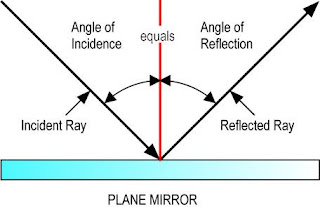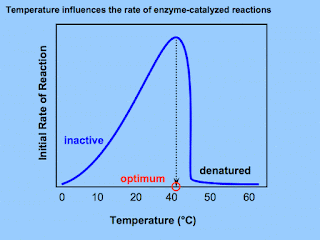Year 9 Revision notes, Physics
You are allowed to use a calculator.
Pressure
Pressure is just a force acting over an area.
Pressure = Force Units of force - newtons, N area - square cm or square m
Area
So, units for pressure N/cm squared or N/m squared 1 N/m squared = 1 Pa, pascal
Small areas, high pressures
Bullets, knives, nails etc.
Large areas, small pressures. Elephants have wide feet to reduce pressure
Canadian Lynx, huge paws for running on snow.
Tractor tyres very wide for driving through mud
You will need to work out pressures exerted by regular solid objects by working out the area of contact.
Pressure in liquids
In an open system (open to the air) such as buckets, swimming pools, oceans etc. pressure is caused by the weight of the liquid pushing against the sides of the container,and acting over a given area, for example 1 m squared. In other words it is caused by gravity.
The deeper the liquid, the more weight acts, so more pressure.
Pressure in liquid = density x depth x g where g is the force due to gravity on Earth, usually 10N/kg.
In just 10 m of water for example, pressure increases by 1,000 x 10 x 10 = 100,000 N/m squared
Pressure in a liquid only depends on depth, not on the shape or size of the container.
Pressure in a closed system, such as a bottle, balloon, piston etc. the pressure depends on the force applied to the liquid. Because liquid particles are already close together, they cannot be compressed (made smaller by squeezing).
Pressure then acts in all directions equally, and increases with increasing force.
As Pressure = Force/Area, by changing the area we can change the pressure.
This used in Hydraulic Machines to multiply a force.
Hydraulic machines can look complicated, but they can be simplified into a diagram as they all work in the same way.
A small piston (small area) and a large piston (large area)
A force applied to the small piston causes pressure in the liquid, usually oil.
Because the pressure is the same everywhere, this pressure will act on the large piston causing a large force.
Pressure = Force 1 = Force 2
Area 1 Area 2
Just put the known values into the formula and solve the maths.
In the above example, because the large piston has 4x the radius of the small piston, area is:
Pi x radius squared, so 16 times larger, so force will be 16 x bigger!
examples of hydraulic machines are: hydraulic press, hydraulic car jack, hydraulic brakes and the lifting arms of bulldozers and diggers.
Pressure in gases
Unlike in liquids, gas particles are far apart and move around in all direction, colliding with each other and the sides of a container. The energy they have is Kinetic Energy, K.E. It comes from the gas being heated.
These collisions cause the pressure.
In an inflated balloon, particles push out by colliding with the walls, the stretched rubber walls pull inwards.
If the gas particles are pushed together using a force, there will be more collisions and a higher pressure!
We say that the pressure in a gas is inversely proportional to the volume.
in other words: if one gets bigger, the other gets smaller!
Atmospheric Pressure
The air around us is a gas. But as we get higher, the air molecules get further and further apart.
At the Earth's surface, the weight of air above pushes the molecules closer together.
At the top of Mount Everest, over 8km high, the air molecules are so far apart it is difficult to breathe.
If you add up all the weight of air in a 1 m square column, like here, it would come to about 100,000 N/m squared, sometimes called 1 atmosphere of pressure, 1 At.
How does temperature affect pressure?
Because gas pressure is caused by collisions, and the collisions depend on Kinetic Energy, changing the temperature will add or subtract energy.
Higher temperature, more energy, more collisions, more pressure!
So, an inflated balloon in a freezer, the gas loses energy, there are less collisions, pressure falls, and the balloon shrinks. Take it out, energy rises, collisions rise, pressure rises again.
Pressure is proportional to temperature. If temperature rises, pressure rises.
Density
Density tells us how much MASS a given VOLUME of stuff has.
e.g. a block of iron would have more mass than the same size block of wood. Iron has higher DENSITY.
Density = Mass Mass, g or kg Volume cm cubed or m cubed
Volume
Density of regular objects.
It's easy to find the density of a regular object such as a cube, block, cylinder, sphere,cone etc.
Just remember the formulae to calculate volumes.
Mass can be found using a set of scales.
Write the formula for density, substitute the numbers, do the maths.
 Density of liquids
Density of liquids
We can measure the volume of a liquid using a measuring cylinder. just remember to take a proper reading as below.
Irregular Objects
To measure the volume of an irregular object, if it will fit into a measuring cylinder we can use the water displacement method.
Take reading before, and reading after adding the object. The difference is the volume of the object.
Mass using scales, write the density formula, plug in the numbers.
Densities of different materials are listed in secondary sources such as the internet. They can be used to work out volumes or masses of different objects such a steel beams, concrete blocks etc. We can also use them to work out what an object could be made of, gold, for example.
Because particles in solids and liquids are close together, they have high densities.
Gases, on the other hand, where particles are very far apart, have very low densities.
Buoyancy and upthrust - floating and sinking
An object in a liquid experiences an upward force called upthrust. It is caused by pressure increasing with liquid depth. There will then be more force acting on the object's bottom than its top. This is an unbalanced force pushing upwards. See picture.
The higher the density of the liquid, the more weight acting so more pressure so more upthrust.
If this upthrust is greater than the downward force due to gravity (weight) the object will float.
If not, the object will sink.
So, if the density of the object is less than the density of the liquid, it floats!

Even though ships are made of iron, a very dense material, the inside of the ship is mostly very low density air. Its
overall density is not enough to make it sink!
Here is photo of a steel nut floating in liquid mercury, which has a very high density of about 14g/cm cubed.
Levers - simple machines
As well as changing speeds, changing shapes and changing directions, forces can make things turn.
This is called TORQUE, or TURNING FORCE or MOMENT OF FORCE.
This turning force increases the further the force acts from the turning point, called the pivot or fulcrum.
This is called a lever, it's a simple machine which can multiply a force.

Long levers can apply very large turning forces,
The force applied to the end of the lever is called the EFFORT.
The force applied to the other end is called the LOAD.
The size of the turning force:
Moment of Force = Force x Distance (from the turning point or pivot.)
Equilibrium
If the moments of force of the EFFORT equals the LOAD, in other words nothing happens because they are balanced, we say the forces are IN EQUILIBRIUM.

A see-saw is a good example. Two people with different weights can sit at different distances from the centre of the see-saw making it balance.
Clockwise and Anti-clockwise Moments.
The force on the left tries to turn the lever left,
anti-clockwise, the right force tries to turn the lever right, clockwise.
Calculations:
Moment or Force = Force x Distance.
Anti-clockwise 4 x 80 = 320 Nm (newton metres)
Clockwise 6 x 50 = 300 Nm
so, the total turning force must be 20 Nm anti-clockwise. The lever will turn to the left.
In this example the system is balanced, in equilibrium.
This means all moments must also be balanced.
So: Anticlockwise moments (3 x 10) + 2 (10 + x) = 30 + 20 + 2x = 50 + 2x Nm will be equal to :
Clockwise moment 4 x 24 = 96 Nm
solve the maths, and x will be 23 cm. All examples like this are done in the same way.
Electrostatic Phenonomena
Electro (Greek for amber, elektron - charge) and Static (not moving)
Rubbing certain objects such as rubber, plastics and amber with a cloth or fur or hair creates a CHARGE.
This charge can attract tings to it such as dust, small pieces of paper or even a stream of waster!
Charges can be POSITIVE or NEGATIVE + or -
Different or unlike charges ATTRACT (pull) each other, the same charges REPEL (push away).
Where do charges come from?

All materials are made of
atoms. This is a model of an atom. They don't really look like this, it's impossible to draw an atom to scale.
If the atom was the size of a football stadium, the nucleus (red and yellow balls) would be the size of a pea in the centre!!
Protons (red) have a positive charge.
Electrons (blue) have a negative charge
The yellow balls are neutrons, they have no charge.
Because, in an atom, there are the same number of protons and electrons, the total charge is zero.
Normally, electrons are very strongly bound to the atom.
But with some materials, like polythene and other plastics, the molecules they are made of are huge.
They are sometimes thousands of atoms long.
Here, the electrons are easier to pull off the atoms. And, because plastics are INSULATORS (they do not easily allow charges to flow through them) this now unbalanced charge will stay on the surface of the plastic.
With other materials the electrons may be pulled off the material doing the rubbing leaving the opposite charge on the plastic.
Why can't metals be charged? Well, they can, but because metals are good CONDUCTORS, any charge will quickly spread out and leak away. The metal dome on a van der graaf generator can be given a very large charge as long as it is insulated well.
van der graaf generator youtube
Risks or electric charges
Sometimes huge charges can build up in machines, or even clouds. This charge has to go somewhere, so if there is a big enough difference between charges in two objects a SPARK will jump between them, neutralising the charge.
This is what we see in a LIGHTNING STRIKE. Lightning can be very dangerous if it hits an object or person, generating extremely high temperatures that can burn or kill.
Buildings are protected with a strip of metal, usually copper, called a LIGHTNING CONDUCTOR which connects the building to the EARTH, called GROUNDING.
In a lightning storm, never shelter under a tree, as the tree can attract a lightning strike.
The safest place to be is in a car, not because of the rubber tyres, but because the metal car body act as a Faraday Cage, conducting the charge around you and into the ground.
Electrical Circuits
We have only just started this topic, but there will be a question on circuit symbols.
 A yellow band appeared. This is crystals of lead iodide that are formed when the different particles mix. They react.
A yellow band appeared. This is crystals of lead iodide that are formed when the different particles mix. They react.





































